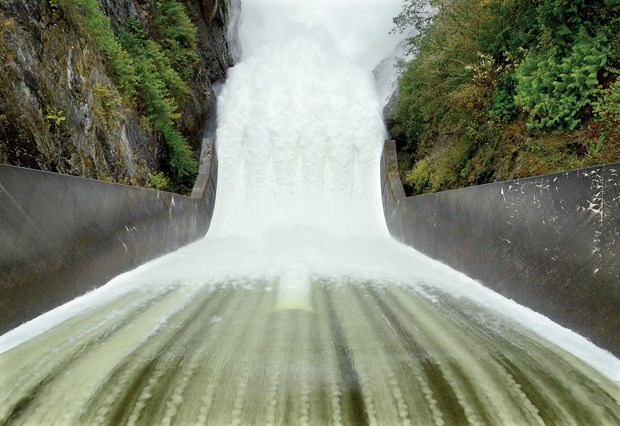The weekend storm and change in the weather that dumped between 100 and 150 millimetres of rain on the North Shore in just a few days is good news for water reservoirs, but officials still don’t know if it will be enough to loosen sprinkling restrictions in the Lower Mainland.
“The rainfall was extremely welcome news,” said City of North Vancouver Mayor Darrell Mussatto, who is chair of Metro Vancouver’s utilities committee. “We had more rain in the last week than we had in the last four months.”
Last weekend’s rain pushed water levels in the region’s three reservoirs back up to 60 per cent of capacity — from a low of 53 per cent before the recent storm.
That’s enough to put the reservoirs back to almost-normal levels for the beginning of September. “The bad news is it’s still not enough to change our watering restrictions,” said
Mussatto, particularly given predictions of a warmer and drier-than-usual fall.
“We still have to take that weather forecast into consideration,” he said.
It’s possible that may change after some of the rain that’s seeped into the ground and into local creeks over the past week makes its way to the reservoirs.
But in the meantime, those who look after the region’s water system are using this summer’s drought as a bad-news beacon from which to consider changes to future water-use policies.
“Everything will be on the table” for discussion, said Mussatto, including the possibility of more widespread use of water meters, limiting sprinkling at earlier stages of a drought and changes to who gets to use water at different stages.
One possibility might be to ban sprinkling at a certain stage while still allowing soaker hoses, which are more water efficient, said Mussatto. “We’re certainly going to be fine-tuning (the water regulations).”
One piece of good news for the region’s water supply is that water use has fallen sharply since the downpour started last weekend, to about 900 million litres a day.
That’s a significant drop from the high point of 1.7 billion litres used on the day with the highest water use July 2 and a drop from the 1.2 billion litres a day averaged in the last weeks of the drought.
Mussatto said most people in the region have been obeying the sprinkling ban.
Snowpack in the local watersheds this spring was less than 10 per cent of the historical average, according to Metro water officials.
But Mussatto said it’s still primarily rainfall in the spring and early summer that water managers count on to keep the reservoirs at adequate levels.
West Vancouver faced similar challenges during the drought, as Eagle Lake, the municipal reservoir that supplies half of the municipality’s water, was down three metres below normal levels at its lowest point.
West Vancouver had to make use of a floating pump to draw water from the deeper part of Eagle Lake after the regular intake was left high and dry in July.
A combination of tighter sprinkling restrictions, letters to residents with higher-than-normal water use and the decision to draw on more regional water supplies allowed the lake to recover over the past month, said Andy Kwan, manager of utilities for the municipality.
Recent rains have boosted lake levels back to those observed at the same time last September, said Kwan.



